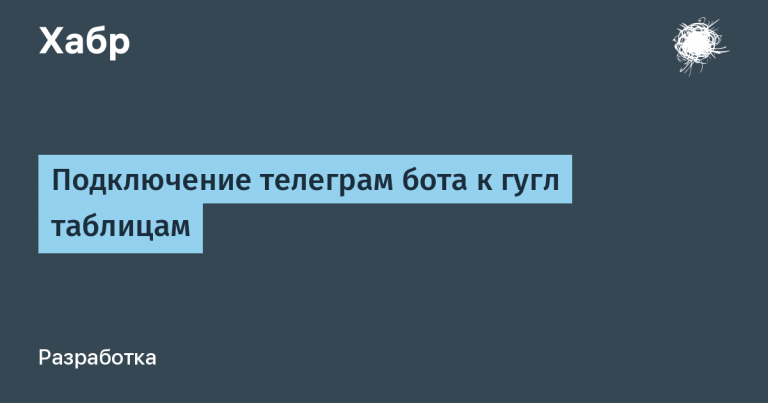No-code solutions for developers that few people talk about

There are hundreds of frameworks, libraries and platforms for no-code development. Today we will discuss those that have high ratings on GitHub, but might have passed you by unnoticed – Formily, Mitosis, APITable, FlowiseAI and ToolJet.
formally
This – library for building web forms, distributed under the MIT license. It is compatible with React and Vue, and also uses JSON Schema to dynamically generate input fields. There is a special environment for building forms – Form Builder. According to the developers, the project is tailored for corporate systems and applications.
On GitHub he totals more than 11 thousand stars, and this is a fairly large community. But many discussions are conducted in Chinese, which makes it difficult for Russian-speaking and even English-speaking developers to participate in the life of the community. If you want to get acquainted with the tool, then you should start with documentation in English.
If we talk about alternatives for building forms (which do not necessarily support the no-code format), then we can highlight the library Formik for React. It offers an API for processing form states and values, as well as error messages. You can also note vue-formulate for Vue.js, which simplifies working with forms using a single component for different input types
Mitosis
Mitosis presented by the Builder.io team, which develops design-to-code tools based on AI systems. The tool is distributed under the MIT license and allows you to create reusable components for several frameworks, including React, Vue, Angular. The goal of the project is to relieve development teams from having to maintain a “split” code base. Mitosis uses JSON as an intermediate format for serializing components. For example, this is what the component code in JSX might look like:
export function MyComponent() {
const state = useStore({
name: 'Steve',
});
return (
<div>
<input value={state.name} onChange={(event) => (state.name = event.target.value)} />
</div>
);
}Mitosis converts it to the following JSON structure:
{
"@type": "@builder.io/mitosis/component",
"state": {
"name": "Steve"
},
"nodes": [
{
"@type": "@builder.io/mitosis/node",
"name": "div",
"children": [
{
"@type": "@builder.io/mitosis/node",
"name": "input",
"bindings": {
"value": "state.name",
"onChange": "state.name = event.target.value"
}
}
]
}
]
}This structure can already be automatically transformed into components for other frameworks (for example, Angular). However, the developers themselves still note several limitations (gotchas) that need to be taken into account. In general, before starting work with the solution, it is worth familiarizing yourself with getting started guide. In addition, there is online platform to test its capabilities.
APITable
No-code or low-code platform under AGPL-3.0, which is positioned as an alternative to Airtable. APITable allows you to create flexible tables that support different types of data and views. However, the tabular form is not the only possible way to present data. You can view and edit them in Kanban, calendar, gallery and Gantt chart modes.
The tool will be useful for teams that work with large volumes of data that require joint processing. APITable supports real-time editing by multiple users, offers the ability to comment and manage access rights (at the column and row level in tables). APITable has 13k stars on GitHub.
FlowiseAI
FlowiseAI distributed under the Apache 2.0 license. It is designed to quickly build, deploy, and test LLM-based applications. The interface is built using ready-made blocks and the drag-and-drop function.
The FlowiseAI architecture is built on the LangGraph framework. Agent systems are designed as a directed cyclic graph. Each node of the graph is an independent unit that performs its own functions, such as processing a language or a logical condition. The connections between nodes represent data flows, where the output of one node becomes the input for the next one, forming a kind of pipeline.
The agent system itself includes three nodes that define states, cycles and conditions. The first type contains data that all nodes share with each other. The second allows you to implement iterative processes in the work of the agent, and the third helps to control the complex branches of the dialogue and change its flow on the fly.
The solution supports integration, Human-in-the-Loop and can be deployed in the cloud.
ToolJet
ToolJet is a platform for developing business applications with an AGPL-3.0 license. Essentially, it is a library of pre-installed components and templates. Although you can write your own extension plugins and widgets for specific requirements.
It is possible to connect databases (PostgreSQL, MongoDB), cloud storage, APIs and services like Airtable. The platform supports drag-and-drop, which makes it easier to work with components such as tables, graphs and forms. At the same time, the developers offer a tool tooljet cli to connect extensions.
ToolJet is also suitable for prototyping and preparing MVPs, but be aware of occasional bugs in new versions and complex initial setup. If these shortcomings are critical to the project, then an alternative may be considered SuperBlockand also Flowdash.
Get access to a reliable virtual infrastructure and launch cloud services without initial costs – free for two months.





![Dark Magic IF,AND,OR [DAX]](https://prog.world/wp-content/uploads/2024/09/2b67286f3859521d1b34138a2ca13954-768x403.png)